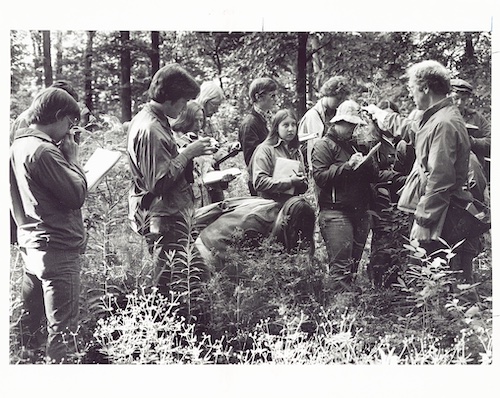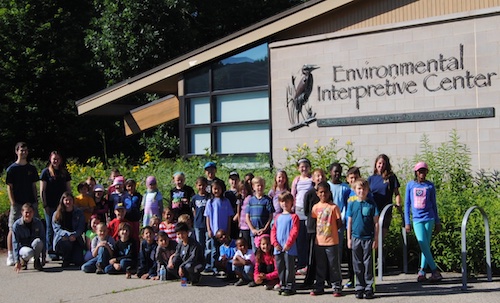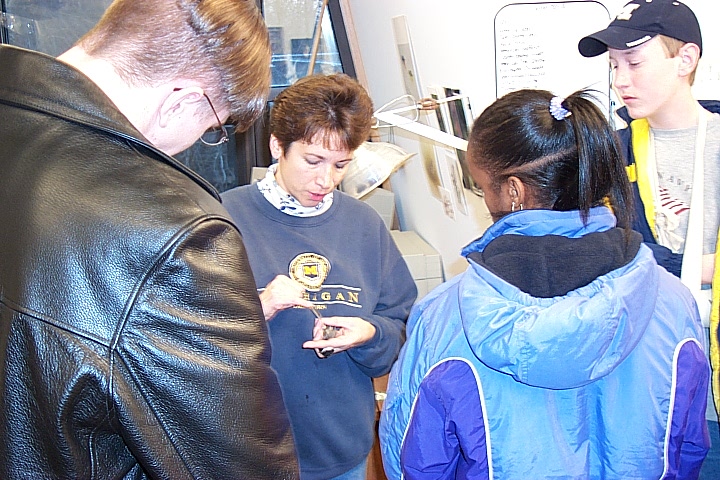History
The Henry Ford Estate and UM-Dearborn
In 1959, when Ford Motor Company donated 210 acres of the Henry Ford Estate to the University of Michigan for a regional campus in Dearborn, one-third of the donated area was designated as a Natural and Historic Area. After Henry and Clara Ford's passing, some of the gardens were no longer maintained and allowed to revert back to a more natural state.

The Environmental Study Area
Starting in the early 1970s, Dr. Orin Gelderloos and a cadre of students began providing guided environmental study programs for the region's school children and families, a unique commitment by a Michigan university to conduct free environmental outreach to the surrounding community.
In 1979, full-time staff was appointed to coordinate programs and supervise the Environmental Study Area. Over the next two decades, interest in opportunities for school children to explore the natural world with hands-on discovery programs increased substantially.
The Environmental Interpretive Center
 In the mid-1990s, the Legislature of the State of Michigan committed 75% of the funds for the construction of the Environmental Interpretive Center (EIC). The remaining funds were contributed by the County of Wayne and UM-Dearborn. An agreement concerning the use of the EIC and the 120 acre Environmental Study Area was signed by UM-Dearborn and the County of Wayne on January 27, 1998.
In the mid-1990s, the Legislature of the State of Michigan committed 75% of the funds for the construction of the Environmental Interpretive Center (EIC). The remaining funds were contributed by the County of Wayne and UM-Dearborn. An agreement concerning the use of the EIC and the 120 acre Environmental Study Area was signed by UM-Dearborn and the County of Wayne on January 27, 1998.
On May 25, 2001, the EIC officially opened its doors. It fulfills the University's goal of educating the communities of southeast Michigan on environmental issues, particularly those related to urban areas. Since its inception, the EIC has provided environmental interpretation and education to over 230,000 school children and community visitors.
The Center has had three Directors in its history: Dr. Orin Gelderloos (2001-2009), Dr. David Susko (2009-2020), and Dr. Claudia Walters (2020-present).
The EIC celebrated its 20th Anniversary in May 2021
To mark the occasion and to celebrate his recent retirement, Dr. Orin Gelderloos presented a Legacy Lecture on 21 May reflecting on his 50 years of service as a Professor of Biology and Environmental Studies. Dr. Gelderloos was instrumental in establishing the Environmental Interpretive Center and the Environmental Study Area, an outdoor classroom that has exposed thousands of students of all ages to the wonders of nature. UM-Dearborn Provost Emeritus Dr. Robert Simpson gave an Introduction to Orin Gelderloos's Legacy Lecture, in which he provided some background on how the EIC came to be a reality.
Alumni, family, and friends submitted tributes to Dr. Gelderloos and the EIC.

The Rouge River Bird Observatory
The Rouge River Bird Observatory (RRBO) was housed at the EIC from 2001 until 2018. It was established by Julie Craves in 1992 to explore the importance of urban natural areas to birds. In our rapidly urbanizing world, habitat fragments in metropolitan areas are essential to bird conservation.
The primary focus of the RRBO was to better understand the importance of urban areas as migratory stopover sites for birds. For many bird species, migrations are crucial times in the annual cycle, and events during these periods can have great influence on their populations. Birds traveling thousands of miles on their way to or from breeding and wintering sites need safe places to stop and refuel. Research conducted at the RRBO focused on how birds use urban habitats during migration, whether urban migratory stopovers provide adequate resources, and what resources are most important. Many migrants stop over at the 300-acre mixed-habitat Environmental Study Area during their spring and fall migrations. With the departure of Julie Craves in 2018, active research was discontinued.
